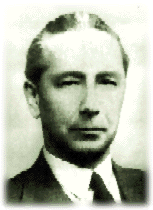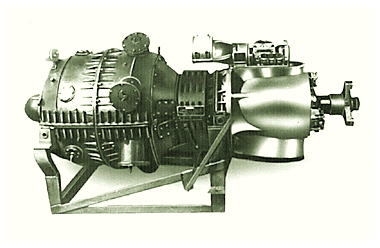|
GYÖRGY JENDRASSIK (1898 - 1954) |
 |
Jendrassik completed his education at Budapest's József Technical University, then at the University of Berlin attended lectures of the famous physicists Einstein and Planck. In 1922 he obtained his diploma in mechanical engineering in Budapest. From 1927 he worked at Ganz Rt, where he helped to develop diesel engines. He designed the world famous Jendrassik engine, of which the first few pieces were made with single and double cylinders; later, the 4- and 6-cylinder four-stroke versions were developed, without compression and with mixing chamber.
Later on he was active in improving gas turbines and in order to speed up research, he established the Invention Development and Marketing Co. Ltd. in 1936. His reputation continued to grow, and he became the factory's managing director from 1942 to 1945. In recognition of his scientific work he was elected in 1943 corresponding member of the Hungarian Academy of Sciences. After the war he was not able to continue developing gas turbines. Distrust surrounded him, and therefore he did not return from one of his travels abroad. He lived in Argentina for a while, then settled in England, where he established his own workshop. The number of his inventions on record in Hungary is 77. His last invention of great importance was the pressure-compensating device.
Gas turbine (1938)

The first turbine possessing its own independent combustion chamber, with low capacity (73 kW), and good efficiency (21.2%). It is an internal combustion engine, transforming the fuel's (gas) thermochemical energy first to heat, then to mechanical energy. As opposed to piston-type engines, here the working process is stationary and each phase takes place in different parts of the machine (compressor, heat exchanger, combustion chamber, turbine). There are no large reciprocating masses inside the gas turbine. Its advantage in flow-technique is that lighter engines can be made.
Jendrassik deserves credit for recognizing the future of gas turbines in flying, without which long-distance or military aircraft could not be imagined today.

